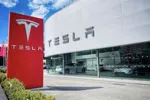While the automotive industry attempts to keep day-to-day operations running, it is having to evaluate the megatrends and decide where to place its big bets.
With the last 18 months accelerating digital strategies and changing consumer expectations, brands and dealerships are having to assess where they should invest to maximise their opportunities for growth and drive efficiencies.
Combining powerful algorithms with human intelligence
If brands and dealer networks are to remain competitive, how they manage their data strategies will be crucial. It will be the bedrock their future success is built on.
If they have a clear, single view of their customer data they will be in a much better position to respond to consumers who expect to interact seamlessly with brands and dealers in a variety of on- and offline settings on the purchasing journey.
The key to getting to grips with all this data is the combination of powerful algorithms and human intelligence.
Retaining 'human intelligence'
As a business we have long since recognised how critical technology innovation is to transforming our proposition and it is one of the main reasons why we have decided to partner with Valsoft.
However, we will not simply become a technology business. Perhaps 80% of our proposition will be around the technology innovation we introduce, but a critical 20% of our proposition will remain “human intelligence” from our retail automotive experts analysing and interpretating data.
The admission by Lordstown Motors that “it did not have enough people with appropriate technical accounting skills overseeing financial reporting or an effective process to assess the risk of material misstatements” demonstrates how badly things can go wrong if you do not have the right people in place to analyse the data flowing around your organisation.
The quality and accuracy of the fundamental financial data within organisations will be central to determining whether a brand understands its customers enough to deliver the right personalised service to them.
The China opportunity
If brands and dealers get their approach to data right, there are significant opportunities ahead. Take China, where ASE already has a strong presence, and we are seeing the competition among the EV vendors hotting up.
While Tesla may have stolen a march on its international and domestic rivals, the ambitions of Chinese EV manufacturers are clear.
Success, though, relies on understanding the market and that is reliant on the strength of your data.
For example, research shows that although Chinese consumers are increasingly enamoured with EVs, they are not as interested in the technology as the connected car capabilities that brands offer.
This is where the local EV manufacturers have bested their international competitors through partnerships with the likes of Alibaba and Tencent.
This does not mean the opportunity for international brands in the Chinese market has passed. It is important they understand what consumers use their vehicles for; according to McKinsey the majority of Chinese consumers only use vehicles for commuting and don’t get up to speeds above 25km per hour. Therefore, vehicle performance and range are understandably less important priorities.
Equally, the successful brands will be the ones that get their dealer strategies right. The brands that can assist their dealer networks to understand the right online approach will be better placed to succeed in the most competitive retail automotive market in the world.
Resetting the brand/dealer relationship
The agency model has been much talked about and as appreciation of the model grows there are opportunities to evolve the brand/dealer engagement.
What we have found is that resetting this critical relationship achieves the best results if done as part of a much more detailed analysis of value.
We are currently conducting a strategy exercise for a number of major OEMs, helping them to define what value looks like now and how they will define it in the future. Together, we are evaluating different approaches.
One is looking at switching to an agency model, one selling completely through partners while another is looking at a hub and spoke model using some partners.
It is clear is that to run such exercises and build robust forward-looking plans you need powerful algorithms and technology to be able to forecast the impact of different approaches.
With the right tools we can assess profitability, calculating the impact of increasing or decreasing the number of dealers or switching to an agency model.
We can also qualify the potential return on investment for the brand depending on the sales strategy it adopts. For example, if the OEM invests in new showrooms for EVs we can calculate the potential impact of less service revenue.
This exercise enables the brand to understand whether it can service the customer and what price point they should pitch their product at.
Identifying value
The brand can calculate how much different models will cost the business as it looks to employ more targeted marketing strategies to reach different demographics.
It can evaluate when it would be better to adopt to the agency model with a network of physical stores or set up pop-up retail units in high footfall shopping centres.
The brand can also calculate where their costs will be, whether it will be in marketing or cost of sale.
By combining powerful algorithms to crunch this data and the human insight of our automotive experts, we ensure change is more evolution than revolution.
Despite the disruption we have seen in recent years, brands and dealers should not change everything for the sake of change.
There is still a clear, important role for the dealer, despite new channels opening up.
Across the world many consumers say their preferred way to acquire a car is still in-person at the dealer.
If brands and dealers are armed with the most accurate data possible about their business performance, and are using the most sophisticated analysis and AI tools available to process that data, OEMs and the dealer networks will have far greater confidence about where the future opportunities lie.
Author: Robert Jones, chief excutive, ASE Automotive Solutions













Login to comment
Comments
No comments have been made yet.